Chhattisgarh: Climate & Soils | Chhattisgarh State PSC (CGPSC) Preparation: All subjects - CGPSC (Chhattisgarh) PDF Download
Climate of Chhattisgarh
The climate of Chhattisgarh is defined by the weather conditions prevailing over a prolonged period, typically measured over 35 years. Chhattisgarh experiences a tropical climate characterized by hot and humid conditions, largely due to its proximity to the Tropic of Cancer and its reliance on the monsoon for rainfall.
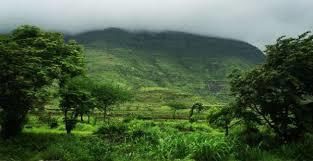
Temperature
- Summer: During the summer, temperatures in Chhattisgarh can soar as high as 45°C (113°F). The summer season extends from March to mid-June. As the sun shines vertically over the Tropic of Cancer in June, temperatures reach their peak, with some parts of the state experiencing temperatures as high as 42.5°C.
- Monsoon: The monsoon season in Chhattisgarh lasts from late June to October. This period provides relief from the intense summer heat, with temperatures starting to decrease as the monsoon sets in. By July, the temperature in Raipur stabilizes around 27-28°C. There is little variation in temperature during September, but a slight increase may occur towards the end of September and into October when the skies clear.
- Winter: Winter in Chhattisgarh lasts from November to January, making it an ideal time to visit the state. The winters are pleasant, with low temperatures and reduced humidity. In January, the temperature distribution varies across the state, with the 10°C isotherm passing through the northern part, the 12.5°C isotherm through the middle, and the 15°C isotherm through the southwestern part, particularly around Dantewada.
- Rainfall: Chhattisgarh experiences monsoonal rainfall, with the majority of the rainfall brought by the Bay of Bengal branch of the monsoon. The amount of rainfall decreases from east to west across the state. The northeastern region of Chhattisgarh, due to its hilly terrain, receives more rainfall. Bastar, in particular, experiences a cool and moist climate with heavy rainfall. The Abhujmarh region in Bastar receives the maximum rainfall in the state, averaging approximately 187.5 cm.
Seasons in Chhattisgarh
- Hot Season: The hot season in Chhattisgarh starts in March and continues until mid-June. During this period, temperatures rise steadily, with some regions experiencing temperatures as high as 42.5°C, particularly in June when the sun is directly overhead at the Tropic of Cancer.
- Rainy Season: The rainy season extends from mid-June to September. Ambikapur, Bilaspur, and Bastar are some of the regions that receive more than 100 cm of rainfall. By the last week of September, the intensity of the monsoon diminishes, leading to clearer skies and a decrease in rainfall.
- Winter Season: Winter begins in November and continues through January. As temperatures start to decline in September, due to the monsoon and decreasing humidity, winter eventually sets in by November. This season is characterized by pleasant weather with lower temperatures and minimal humidity.
Soil of Chhattisgarh
Chhattisgarh, located in the southeastern part of India, features a diverse geological structure predominantly consisting of Archean and Cuddapah rocks. However, the region also has significant deposits of Dharwar, Gondwana, Deccan trap, and old alluvial laterite rock systems.
The soils of Chhattisgarh are categorized into five main types:
1. Red-Yellow Soil
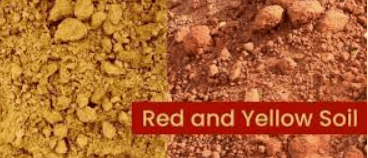
- The red-yellow soil is primarily red due to the presence of ferric oxides, which coat the soil particles. When iron oxide occurs as haematite or hydrous ferric oxide, the soil takes on a red hue, while the hydrated form, limonite, gives the soil a yellow color. This type of soil is prevalent across non-alluvial tracts of peninsular India, formed from acidic rocks such as granite, gneiss, and schist.
- The red-yellow soil is common in areas where rainfall leaches soluble minerals, leading to a loss of chemically basic components and an increase in oxidized iron, which imparts the reddish hue. These soils are often referred to as ferralitic soils.
- In Chhattisgarh, red-yellow soil covers around 55% of the state's area and is the most widespread soil type, particularly found in the districts of Raipur, Bilaspur, Durg, Korba, Mahasamund, and Jashpur. This soil is suitable for cultivating rice, sorghum, millets, and pulses.
2. Red Sandy Soil
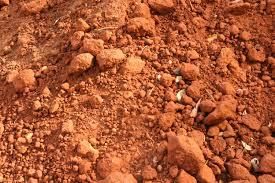
- Red sandy soil has a higher sand content compared to clay, allowing for quick drainage, faster warming in spring, and easier tilling. The red color indicates the presence of iron, which helps prevent iron deficiency in plants, although the soil is often acidic and low in nutrients. Organic matter addition and careful watering can help mitigate these issues.
- Red sandy soil is the second most common soil type in Chhattisgarh, occupying about 30% of the state’s area. It is primarily found in the districts of Dantewada, Kanker, Dhamtari, and Durg. The soil has low fertility and water retention capacity due to its sandy nature.
- Despite these challenges, red sandy soil is ideal for crops such as watermelons, peaches, peanuts, and can support intensive dairy farming due to its excellent drainage. It is also used for various purposes, including as a base material for aquariums, in brick manufacturing, and in beach nourishment projects.
3. Red Loam Soil
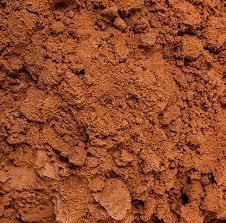
- Red loam soil is a mixture of clay, sand, silt, and organic matter. This soil is loose, fertile, easy to work with, and well-draining, making it suitable for growing a wide variety of plants. The balanced composition of sand, silt, and clay in loam soil provides the ideal environment for plant growth, combining good aeration, drainage, and water retention.
- In Chhattisgarh, red loam soil is found in the regions of Dantewada, Bastar, Sukma, and Bijapur. The soil is rich in iron, giving it a red brick-like appearance, and has a pH value of up to 6.6%. Due to its low humidity absorption capacity, red loam soil requires regular irrigation and is best suited for cultivating paddy and coarse grains.
4. Black Soil
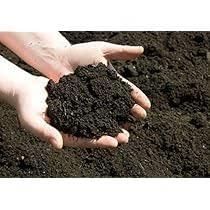
- Black soil, also known as regur or black cotton soil, is famous for its suitability for cotton cultivation. The soil is believed to have formed from the solidification of lava during volcanic activity on the Deccan Plateau thousands of years ago.
Black soil has several notable characteristics:- It is mature soil with high water retention capacity.
- It swells and becomes sticky when wet, and shrinks upon drying.
- It is rich in iron, lime, calcium, potassium, aluminum, and magnesium, but deficient in nitrogen, phosphorus, and organic matter.
- The soil's ability to develop wide cracks when dry allows for self-ploughing.
- In Chhattisgarh, black soil, locally known as "Kanhar," is prevalent in the districts of Kawardha, Dhamtari, Mahasamund, Mungeli, and Balod. This soil is ideal for growing wheat, gram, oilseeds, pulses, cotton, and soybeans.
5. Laterite Soil
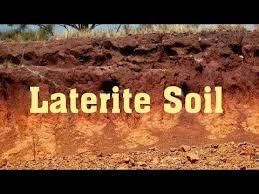
- Laterite soil is rich in iron and aluminum and forms in hot and wet tropical areas through the long-term weathering of parent rock.
This soil type is characterized by:- An extreme red color due to leaching of alkalis and silica.
- Accumulation of sesquioxides in the top layer.
- Crust formation near the surface, nodular concretions, and induration.
- An acidic soil reaction with poor base saturation.
- The monsoon climate plays a significant role in the formation of laterite soil in Chhattisgarh. The alternating wet and dry seasons cause the erosion and breakdown of rocks, leading to the formation of this soil. Laterite soil has a low water absorption capacity and is generally infertile, though it can still support the cultivation of cereals, millets, Kodo, mites, potatoes, and oilseeds.
- Laterite soil is found in the regions of Surguja, Jashpur, Balrampur, Durg, Bastar, and Bemetara in Chhattisgarh. It is locally known as "Bhata."
Local Names of Soils in Chhattisgarh
- Red-Yellow Soil: Matasi
- Laterite Soil: Bhata
- Black Soil: Kanhar
- Red Sandy Soil: Tikra (particularly in the Bastar Plateau)
FAQs on Chhattisgarh: Climate & Soils - Chhattisgarh State PSC (CGPSC) Preparation: All subjects - CGPSC (Chhattisgarh)
| 1. What is the climate like in Chhattisgarh? |  |
| 2. What are the average temperatures in Chhattisgarh throughout the year? |  |
| 3. How does the monsoon season affect Chhattisgarh's climate? |  |
| 4. What are some common weather patterns seen in Chhattisgarh? |  |
| 5. How does the climate of Chhattisgarh impact the state's agriculture and economy? |  |





















